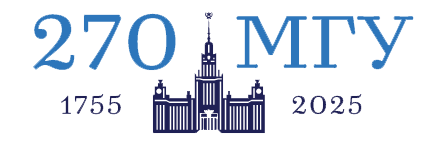You are here
Department of Computational Technologies and Modeling
Head of the department: Tyrtyshnikov Eugene E., Corresponding Member of RAS, Professor, Dr.Sc.
The Department of Computational Technologies and Modeling was founded in 2004 and it is closely connected with the Institute of Numerical Mathematics of RAS. The main research areas include mathematical technologies of numerical analysis, mathematical modeling of the environment and climate, mathematical modeling in medicine.
The Department is one of the leading Russian scientific center in computational mathematics and supercomputer simulation. The staff of the Department is directly involved in the development of the global climate model and the model of general atmospheric circulation used in global medium-range numerical weather prediction at the Hydrometeorological Center of Russia. Research projects are concerned with the mathematical modeling of molecular-genetic, immunological and epidemiological processes, problems of data assimilation. New methods of computational mathematics based on tensor representation of multidimensional data are developed.
The Department collaborates with the P.P. Shirshov Institute of Oceanology of RAS, the Nuclear Safety Institute of RAS, the Hydrometeorological Center of Russia, Research Computing Center of Moscow State University, Max Planck Institute for Mathematics in the Sciences. Since 2010 the Department organizes the Rome-Moscow School of Matrix Methods and Applied Linear Algebra which includes a two-week course of lectures and seminars for advanced undergraduate, master's and PhD students in Moscow and Rome.
Staff members:
- Lykosov Vasiliy N., Corresponding Member of RAS, Professor, Dr.Sc.
- Agoshkov Valery I., Professor, Dr.Sc.
- Bogatyrev Andrei B., Professor, Dr.Sc.
- Bocharov Gennady A., Professor, Dr.Sc.
- Vassilevski Yury V., Professor, Dr.Sc.
- Romanyukha Alexei A., Professor, Dr.Sc.
- Setukha Aleksey V., Professor, Dr.Sc., Scientific Secretary of the Department
- Tolstykh Mikhail A., Professor, Dr.Sc.
- Melik-Adamyan Areg F., Associate Professor, PhD
- Oseledets Ivan V., Associate Professor, PhD
- Rudnev Sergey G., Associate Professor, PhD
- Zamarashkin Nikolay L., Associate Professor, PhD
- Lebedeva Olga S., Assistant Professor
- Grigorieva Svetlana G., Technician
Regular courses:
- Functional analysis and computational mathematics by Prof. Bogatyrev, 68 lecture hours and 32 seminar hours, 5th and 6th semesters.
- Adjoint equations and optimal control methods by Prof. Agoshkov, 68 lecture hours, 6th and 7th semesters.
- Computational technologies and mathematical modeling of biological systems by Prof. Bocharov, 64 lecture hours, 6th semester.
- Contemporary computational technologies by Prof. Vassilevski, 32 seminar hours, 6th semester.
- Variational projection methods by Prof. Vassilevski, 68 lecture hours, 7th and 8th semesters.
- Matrices and calculus by Assoc. Prof. Zamarashkin, 68 lecture hours and 32 seminar hours, 5th and 6th semesters.
- Mathematical methods of numerical analysis by Prof. Tyrtyshnikov, 36 lecture hours and 36 seminar hours, 5th semester.
- Numerical methods in geophysical fluid dynamics by Assoc. Prof. Tolstykh, 68 lecture hours, 7th and 8th semesters.
Special courses:
- Computational information technologies of climate modeling by Prof. Lykosov, 32 lecture hours, 8th semester.
- Multigrid and domain decomposition methods by Prof. Vassilevski, 36 lecture hours, 7th or 9th semester.
- Mathematical models in immunology and medicine by Prof. Romanyukha and Dr. Rudnev, 32 lecture hours, 8th semester.
- Mathematical models in epidemiology by Dr. Melnichenko, 68 lecture hours, 7th and 8th semesters.
- Mathematical modeling of geophysical turbulence by Prof. Lykosov, 68 lecture hours, 7th and 8th semesters.
- Numerical methods in integral equations and their applications by Assoc. Prof. Setukha, 68 lecture hours, 7th and 8th semesters.
Special scientific seminars:
- Computational technologies and mathematical modeling of biological systems by Prof. Bocharov.
- Computational information technologies of climate modeling by Prof. Lykosov.
- Mathematical models in immunology and medicine by Prof. Romanyukha.
- Contemporary problems of matrix analysis by Prof. Tyrtyshnikov.
Master's programmes (MSc):
- Computational technologies and modeling.
- Mathematical and computer methods in natural sciences.
Main Scientific Directions:
The methods of variational data assimilation problems solving and complex systems control
Professors Guriy Marchuk, Valery Agoshkov, and Vladimir Zalesny)
The scientific project is aimed at developing efficient algorithms which are based on adjoint equation approach for solving data assimilation problems for geophysical flows. The ultimate goal is to create a contemporary Informational Computational System (ICS). This system is intended for analyzing and solving inverse problems and optimal control problems for nonlinear mathematical hydrodynamics models.
Data assimilation is the combination of information from observations with models of a particular physical system in order to get the best possible estimate of the system's state. Numerical model combined with the data assimilation technique provides a powerful tool for the realistic forecast of geophysical flows. The creation of ICS of variational data assimilation for geophysical flows in the World ocean is very important for prediction of global changes on the Earth, which are a major threat to the society security and are connected with the environment protection, ecology, climate and weather prediction. The development of the advanced data assimilation schemes is essential for the operational prediction centers all over the world.
The scientific group consists of 16 researchers, the additional information is available at www.adeq.inm.ras.ru.
Matrix and tensor methods in multidimensional problems
(Prof. Eugene Tyrtyshnikov).
Usually we consider problems in 2 or 3 dimensions, sometimes there appears 4-dimensional problems (that is space plus time). However, there are important classes of problems (e.g. in quantum chemistry and molecular dynamics) where the number of dimensions is much higher. Let the data be associated with a d-dimensional array of size 2 × 2 × . . . × 2. The number of elements in such an array is equal to 2d. If d=280 then it is already larger than the number of atoms in the Universe! In those cases we are faced with the so-called curse of dimensionality. For problems of that scale, supercomputer technologies, whatever powerful they are otherwise, are not enough and we need principally new mathematical methods.
How can we construct these methods? This is an immense problem and it forms one of major research directions of the Department of Computational Technologies and Modeling. New ideas that are crucial for the success of this direction, appeared only in recent years and are related with a new low-parametric decomposition for d-dimensional arrays, the tensor-train (TT) decomposition, and the corresponding TT-algorithms free from the curse of dimensionality that appeared as late as in 2009. In particular, if a d-dimensional integral is computed then the d-dimensional array of the values of function under integral is approximated through a small part of its values (by the cross method of TT-interpolation). TT-decomposition provides us with striking new possibilities for problems of quantum chemistry, approximations of multivariate functions, minimization of high complexity functionals, data processing of different kinds (images, video, signal etc.)
New generation coupled model for the system ‘atmosphere-land-ice-ocean’
(Ass. Prof. Mikhail Tolstykh, Corr. Member of RAS Rashit Ibrayev).
One of the research lines of the Department is the numerical weather prediction. At the Institute of Numerical Mathematics RAS and the Hydrometcentre of Russia an original numerically efficient global semi-Lagrangian finite-difference atmospheric general circulation model is developed. The model has passed operational trials and is implemented at the Hydrometcentre of Russia in 2010 as the basic numerical method for global medium-range weather prediction. The same model is accepted as one of the components of the probabilistic system for seasonal forecast of near-surface temperature anomalies.
Season forecast systems on the base of coupled models of general circulation of atmosphere and ocean are developed and realized at many centers of atmospheric research and also at meteoservices. One should understand that forecast in this context is not a deterministic forecast of the atmospheric state, but the forecast of season-averaged anomalies with respect to climatic-averaged values for this season. Seasonal forecasts that use coupled atmosphere-ocean models try to use the atmospheric circulation predictability due to changes in boundary conditions of the atmosphere, for example, changes of sea surface temperature. Such forecasts are needed, for example, in agriculture (as they deliver the sum of effective temperatures in the warm season) and in power generation (as they estimate the necessary fuel stock during the heating season).
The atmospheric general circulation model SL-AV was coupled to the sigma-model of the ocean general circulation model INMSOM (Institute of Numerical Mathematics Sigma Ocean Model). The spatial resolution of SL-AV is 1.40625° in longitude, 1.125° in latitude, and has 28 vertical levels. The model includes the land cover parameterization which takes into account the vegetation impact. The spatial resolution of the ocean model is 1° in longitude, 0,5° in latitude and has 40 irregularly spaced levels in depth. Using this coupled model, historical forecasts for 4 months are computed using the real data for each of 4 seasons of years 1989-2010. The results show the perspectives of using the coupled model for operational forecasts of seasonally averaged anomalies of the near-surface air temperature and the sea-level pressure, especially in tropics.
Currently, the work is going on the implementation of the coupled model for the system ‘atmosphere-land-ice-ocean’ that has the horizontal resolution over the ocean of approximately 10 km. Refs:
- M. A. Tolstykh, D. B. Kiktev, R. B. Zaripov, M. Yu. Zaichenko, and V. V. Shashkin. Simulation of the Seasonal Atmospheric Circulation with the New Version of the Semi_Lagrangian Atmospheric Model // Izvestiya, Atmospheric and Oceanic Physics, 2010, Vol. 46, No. 2, pp. 133–143.
- A.S. Sarkisyan , R.A. Ibrayev, N.G. Iakovlev. High resolution and four-dimensional analysis as a prospect for ocean modeling // Russ. J. Numer. Anal. Math. Modelling, 2010, Vol. 25, No. 5, pp. 477-496.
Computational technologies and modeling in geophysics and biomathematics
(Prof. Yuri Vassilevski)
Students are involved in the development of various interesting and demanded numerical models. Models of blood flows in the cardio-vascular system are applied to the forecast of the impact of a possible pathology or an intervention in the system. Models of geofiltration and geomigration are applied to the evaluation of an environmental pollution caused by possible leaks of nuclear waste repositories. Models of multi-component multiphase flows are used intensively in the oil industry. A model of propagation of the alternating current in a human body is used for optimizing bioimpedance diagnostics. A model of three-dimensional flows of viscous and visco-plastic fluids is used for the evaluation of natural and technogenic disasters such as dam breaks, avalanches, and landslides.
Recent publications:
• 2013
- Kazeev V., Khoromsky B.N., Tyrtyshnikov E.E. Multilevel toeplitz matrices generated by tensor-structured // SIAM J. Sci. Comput. 2013. 35. N 3. P. 1511-1536.
- Tudisco F., Di Fiore C., Tyrtyshnikov E. Optimal rank matrix algebras preconditioners // Linear Algebra Appl. 2013. 438. N 1. P. 405-427.
- Tyrtysnikov E.E., Tretyakov A. A finite gradient-projective solver for a quadratic programming problem // Russ. J. Numer. Anal. and Math. Modeling. 2013. 28. N 3. P. 289-300.
• 2012
- Mikhalev A.Yu., Oseledets I.V. Representation of quasiseparable matrices using excluded sums and equivalent charges // Linear Algebra Appl. 2012. 436. N 3. P. 699-708.



